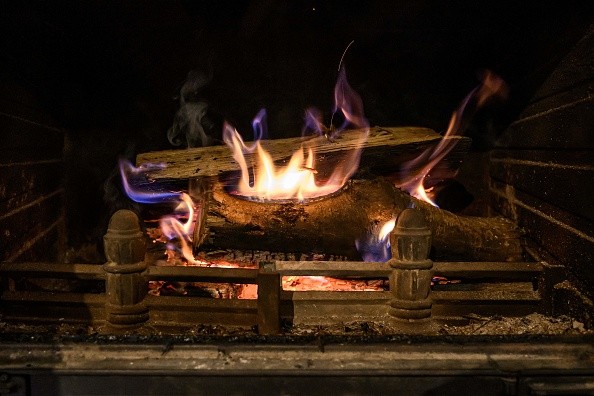Campaigners have called for stricter regulations on their use due to their negative impact on air pollution and health, despite the fact that wood burning has grown in popularity in the UK over the last decade.
Domestic combustion is the single most significant source of small particulate (PM2.5) air pollution in the UK, surpassing road traffic.
Demand For Wood Stoves Is Soaring In Energy Crisis
 (Photo : LOIC VENANCE/AFP via Getty Images)
(Photo : LOIC VENANCE/AFP via Getty Images)

Following a series of reports about the environmental damage caused by wood-burning stoves, hundreds of people responded to a Guardian call for comment, as per ScienceDaily.
Many people said they used a wood-burning stove because it was inexpensive, but they were careful about the fuel they used, preferring seasoned or kiln-dried wood.
Estimated emissions from various types of fuel and appliances vary greatly, and only stoves that meet the ecodesign standard can be legally sold in the UK beginning in 2022.
Many of the readers who responded to the call stated that they owned such stoves. Despite being far superior to non-exempt stoves, the Department for Environment, Food, and Rural Affairs (Defra) claim that the ecodesign standard is still responsible for high levels of PM2.5.
According to one of the readers, Susan Cooper, thirteen years ago they installed a Defra-approved stove to replace the existing open fire. She dislikes it when people burn trash because she can smell it.
"The warm glow of bioethanol (and self-righteousness) keeps me warm in the evenings," according to Colin Maltby, project manager in Stourbridge and one of the readers, after a decision three years ago to go against the grain of his peers and not buy a wood-burning stove and instead opt for a bioethanol fire, on air quality and carbon reduction grounds.
The fire looks the same, produces a decent amount of heat, and is, on the whole, less expensive.
Also Read: Study Shows That 'Eco' Wood Stoves Releases Much More Pollution Than an HGV
Is It True That Wood-Burning Stoves Are Bad For The Environment?
Yes and no, respectively. The question of whether wood stoves are harmful to the environment does not have a simple answer. However, there are some things you can do to improve things, as per Conserve Energy Future.
On the one hand, wood stoves are virtually carbon neutral. Wood is a carbon-neutral energy source, and while this may seem counterintuitive, the logic is straightforward.
A tree absorbs a significant amount of carbon dioxide throughout its life cycle, and when the wood is burned, the absorbed carbon is released back into the atmosphere.
This amount of carbon dioxide absorbed by the tree during its lifetime is balanced by the total amount of gas released when the wood is burned.
As a result, the amount of carbon dioxide added to the atmosphere is effectively zero. Some governments even provide subsidies for certain types of domestic wood burners. Furthermore, burning wood is a low-carbon alternative to using fossil fuels to heat the home.
In London, for example, wood-burning accounted for up to 31% of particulate pollution a few years ago, a 10% increase. Particulate matter contributes to climate change and can cause respiratory problems or even cancer in humans.
In fact, soot particles 100 times smaller than the diameter of a human hair are among the most dangerous types of air pollution, and once they enter the body through the lungs, they can aggravate heart and respiratory conditions and be extremely dangerous.
As a result, wood-burning stoves are not the most environmentally friendly option, particularly in urban areas.
Related article: Air Pollution: Wood Smoke Linked for Almost 50% of Human Exposure to Cancer-causing Chemicals
© 2024 NatureWorldNews.com All rights reserved. Do not reproduce without permission.





